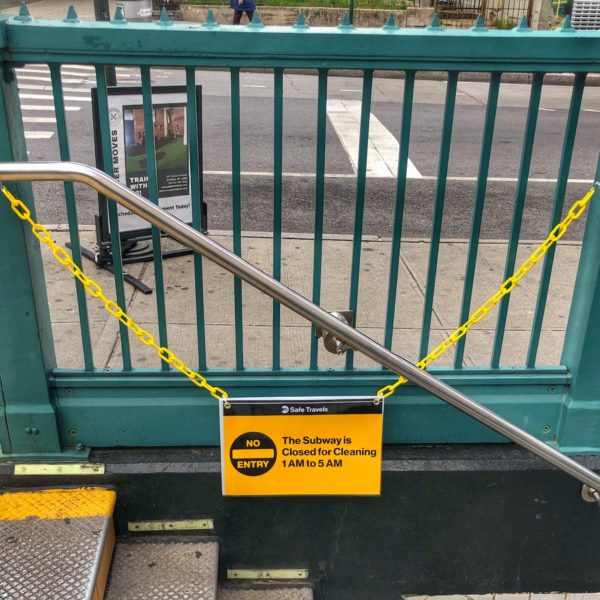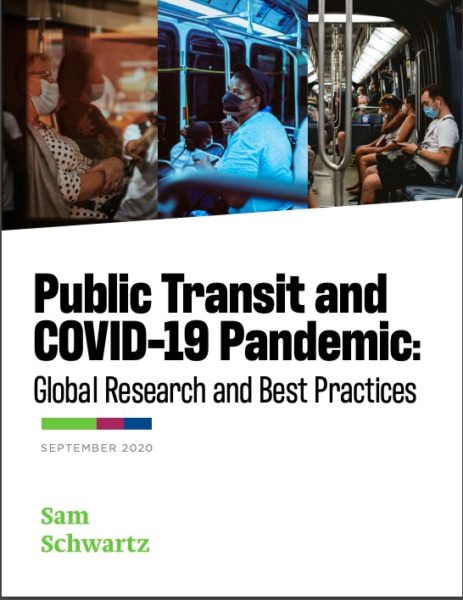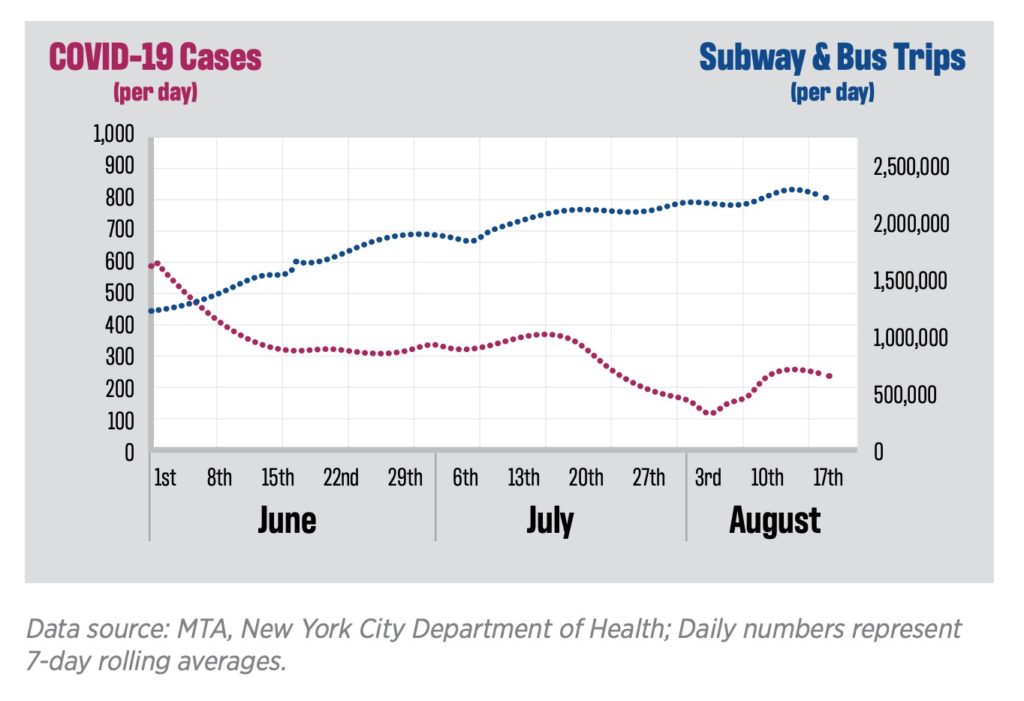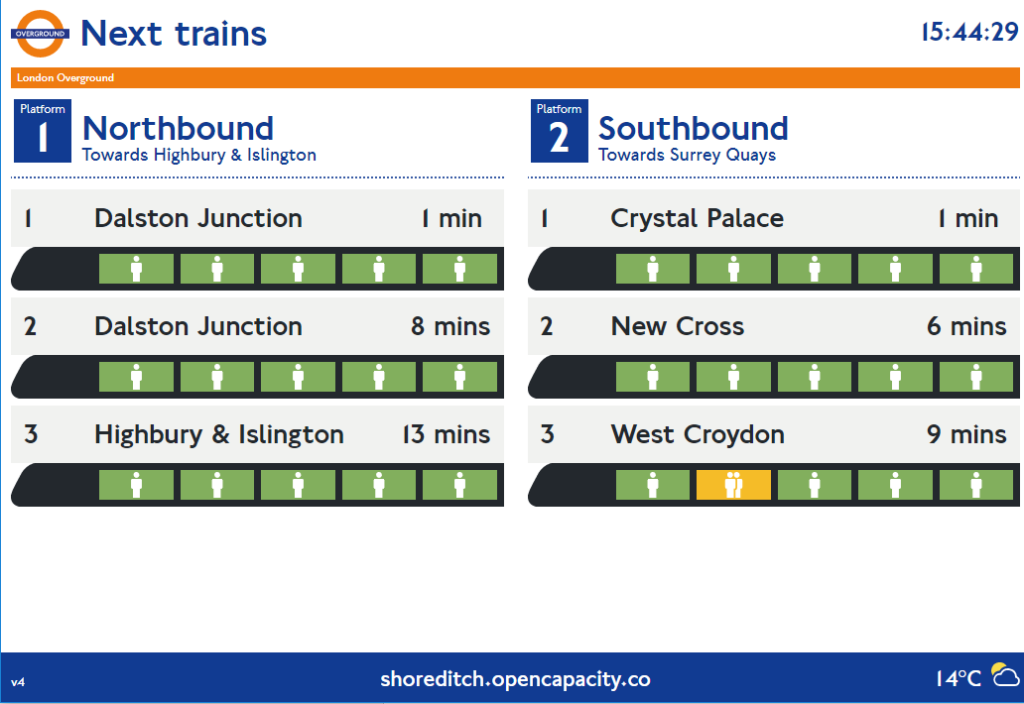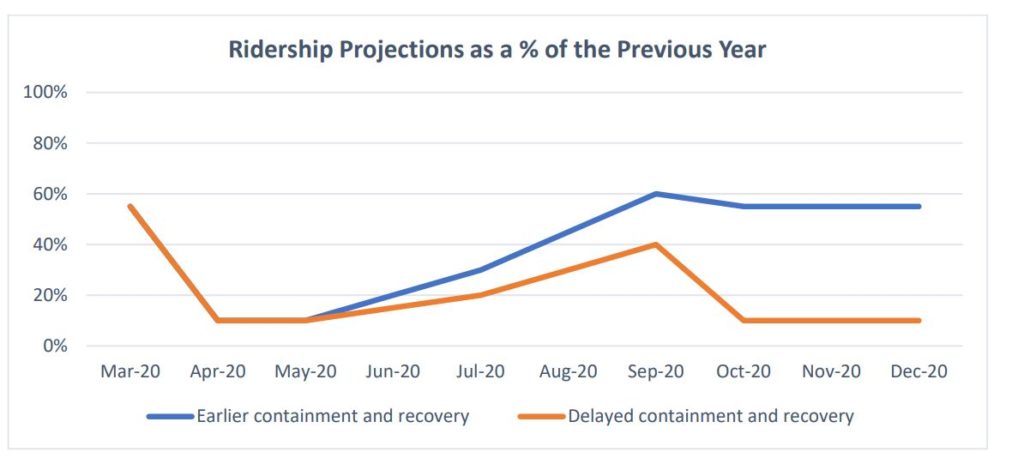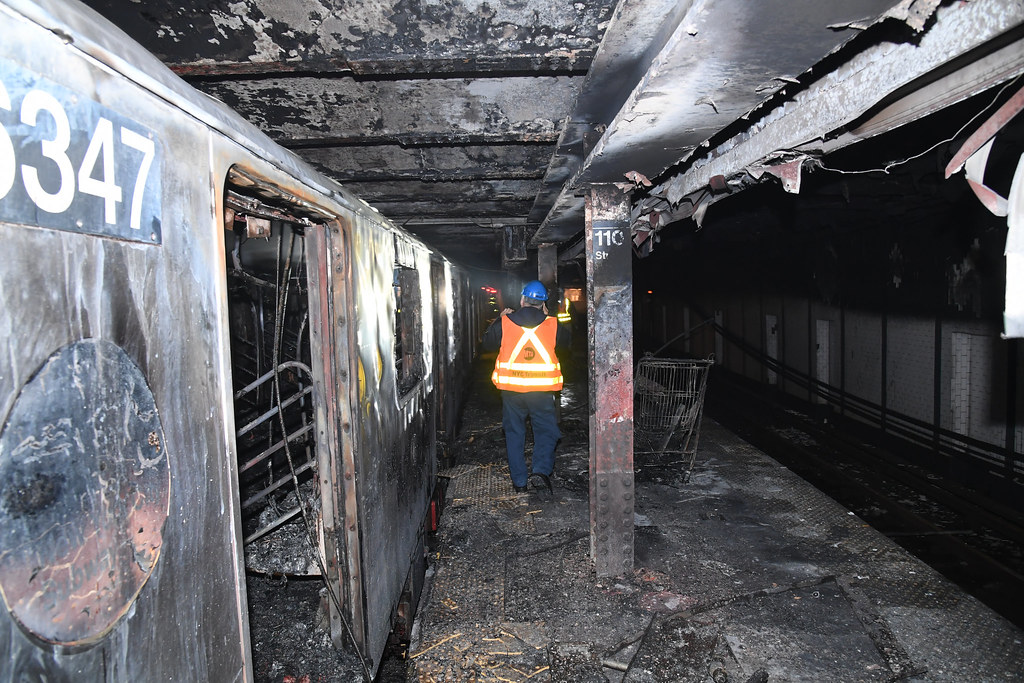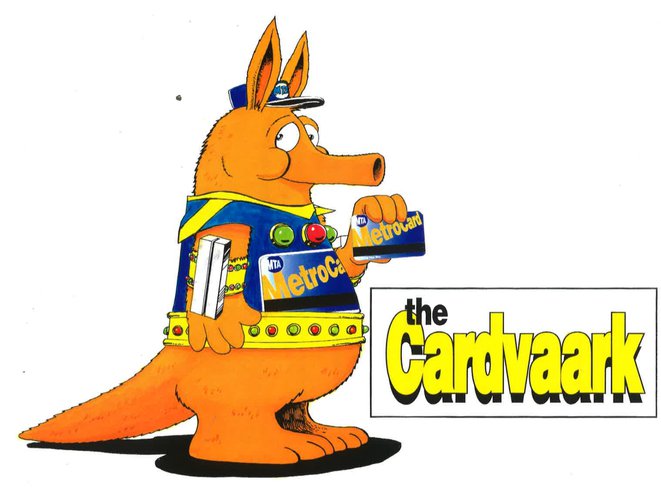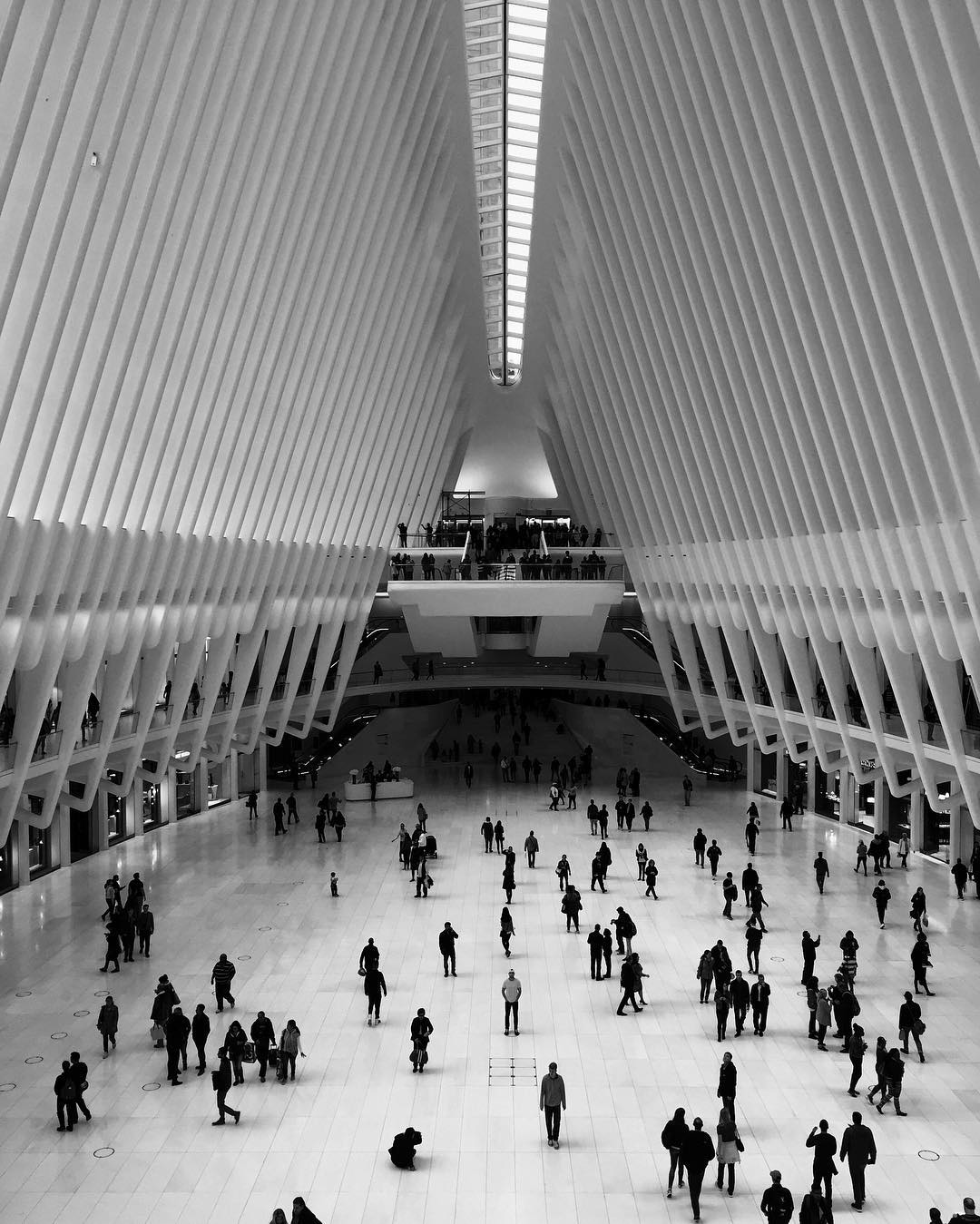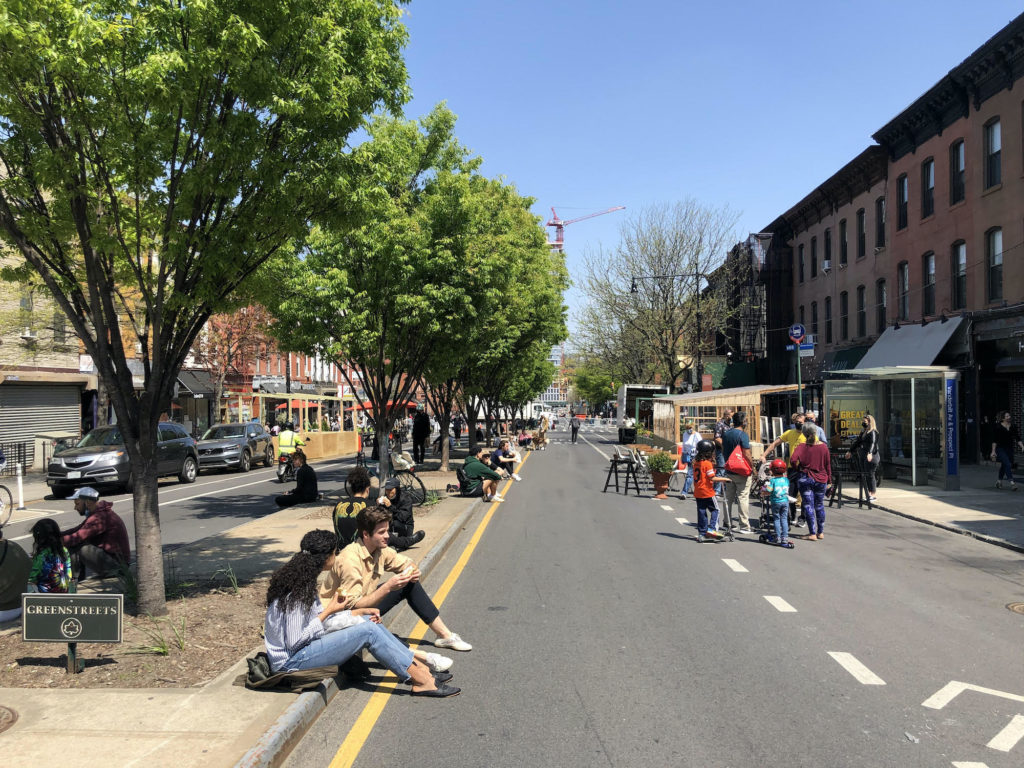
Open Streets on Vanderbilt Ave. was packed just one minute after the official opening time on Saturday. (Photo by Benjamin Kabak)
While walking back from Prospect Park on Saturday morning, I took a stroll down Vanderbilt Avenue shortly before noon. The street was bustling with volunteers dragging metal barricades into the intersections to set up the popular Open Streets program, and by 12:01 p.m., Brooklynites grabbing lunch from Ye Olde Bagel Shoppe had taken over the median between Prospect Place and St. Marks Avenue. It was a glorious sunny afternoon, and the street was alive not with the drone of traffic but with the sounds of people enjoying being outside with their friends and family.
Amidst the tragedy of the past 14 months — the millions of deaths and the economic destruction that have changed the city and country and world — New Yorkers have changed the way they interact with space in the city. To keep as many of the city’s hundreds of thousands of restaurants afloat, after significant public pressure last summer, the mayor launched an outdoor dining program that allowed tables to take over parking spots, and over the winter, these spaces became semi-enclosed structures, some fancier than others.
A few busy corridors have gotten the temporary car-free treatment as Vanderbilt Ave. has. For a few hours from Friday-Sunday, cars are prohibited from driving on a handful of streets in the city, and these streets become vibrant spots for people, with picnics in the road, tables in the street, music in the air, and the vibrancy of city life of replacing traffic. These business-oriented Open Streets aren’t the only one though, and certain other streets throughout the city have been turned over to volunteer networks to run as limited access shared spaces, giving New Yorkers more space to run, walk, bike and simply sit. Each day, volunteers drag barriers into the streets that are intended to be closed to through traffic and cars limited to speeds of just 5 miles per hours. (I volunteer for one of them – the Underhill Ave. Open Street during the week.)
The program is great and, based on recent polling, very popular, but it’s also very tenuous. Despite 3 million free parking spaces and thousands of miles of roads, drivers in the city act with intense anger when told they do not have unfettered rights to every inch of paved asphalt in New York. A recent Streetsblog post summarized the response and charged the mayor with abandoning what could have been a signature program. The problem is worse than that: Open Streets was supposed to be a way for New Yorkers to have space during the pandemic. Instead, it has become yet another symbol of the way the mayor treats pedestrian-first policies: neglected and left to rot, waiting only for tensions to boil over, as city support dries up and fiscal support never materializes. It doesn’t have to be this way.
When Bill de Blasio thought he could run for president a few years, I wrote a piece for Curbed New York exploring the shortcomings in his transit and transportation policies. These words were from before the days of COVID and our need to have space outdoors for safe socialization:
For de Blasio, the failure to act quickly and decisively in the face of multiple crises is one of perspective. He sees the city as a driver, and thus, he does not act to limit the free rein drivers have over city streets. His refusal to consider limiting space for drivers and the giveaway of on-street parking results in a subpar Vision Zero that is reactive instead of proactive, poorly designed bike and pedestrian safety infrastructure, slow bus service, and rampant placard abuse… Every decision over space allocation on public streets should prioritize safety for pedestrians and cyclists, and speed for high-capacity buses. But the mayor views the city through his daily car rides, so we’re still stuck in traffic—literally and figuratively.
How I wish I were not so prescient. This assessment of de Blasio’s transportation legacy held true last spring when the mayor undelivered on bus lanes, failed to have a plan, and failed to show any urgency in the face of the coronavirus crisis. As we begin a second pandemic spring, with significantly increased knowledge about the virus and what works for international cities, and as we face a summer of New Yorkers spending as much time as possible outside, Bill de Blasio’s failures — this time as they negatively impact the popular Open Streets program — are once again in the spotlight.
The mayor’s problem is that he thinks doing something is the same as doing something right. Open Streets was initially supposed to be a partnership between neighborhood volunteer groups and local police precincts, but that partnership never materialized. Last year, they dropped off flimsy sawhorses and accrued overtime at protests rather than at open streets. This year, NYC DOT provided metal barriers and no police presence. Why? Because the NYPD doesn’t care to undercut the privilege that allows them to park everywhere with impunity, and the mayor doesn’t care to create even the bare minimum of an enforcement regime.
Of course, as with Vision Zero, Open Streets doesn’t rely on enforcement to succeed, and a good Open Streets program will be more about design than enforcement. So long as the program relies on unempowered volunteers and flimsy barriers rather than permanently redesigned streets that do not create conditions for cars to take over, each Open Streets segment will be only as good as the neighbors in charge and as vulnerable as those in Greenpoint currently under fire by a loud but small minority of car owners. In each case, the mayor has done nothing to step in and defend Open Streets. He keeps saying there is more to come, but so far, more hasn’t come, even as volunteers ask for governmental support and funding.
And therein lies yet another rub. A successful and permanent Open Streets relies on design changes and streets that are not simply car funnels, but the current iteration needs funding to succeed before design can be upgraded. The city has delivered no funding whatsoever. In Prospect Heights and Park Slope, community groups raised $25,000 and $50,000, respectively, through GoFundMe and similar crowd-sourced fundraising platforms. Further south, in the less well-off neighborhood of Sunset Park, a similar effort is still $30,000 shy of its goal. This is a tall fundraising order for a crowdsourced streets campaign but barely a blip for a city with a budget in excess of $92 billion. In short, New York City should be able to scrounge up the money each of these groups need for their open streets, especially as those in business districts will realize the benefits in increased economic activity (and increased tax revenue) nearly immediately. That the city cannot design, enforce or even fund any real Open Streets program is yet another indictment of the way the mayor fails to understand how New Yorkers want their city to be.
All hope is not quite lost though, as sub-par Open Streets implementations have become an issue in the mayoral campaign. Shaun Donovan recently took the mayor to task for failing to lead, and current polling front-runner Andrew Yang has talked about a permanent program with city funding. But advocates are sounding a more immediate alarm, noting that 22 miles are off the list this year and calling for quick and permanent physical upgrades.
As life returns to normal over the next few months, though, this summer could be a make-or-break moment for many of the city’s open streets, both those with business and those without. The space will become a luxury rather than a mid-pandemic need, and life will move on with only those Open Streets that have a willing neighborhood partner and a strong volunteer group surviving. Sure, businesses will push for their weekend takeovers, but a networked citywide program in all neighborhoods of space given back to people from cars won’t be at the forefront of the minds of anyone but the usual slate of activists. If that reality comes to pass — and I hope it doesn’t — that will be the final transportation failure of the Bill de Blasio Administration. A better city, with slightly more space for people and slightly less space for cars, with shared streets and true slow zones, with active street life and neighbors and neighborhoods outdoors, is within our grasp. All it takes is a political push from the one person in the city who doesn’t realize he needs to give it.

